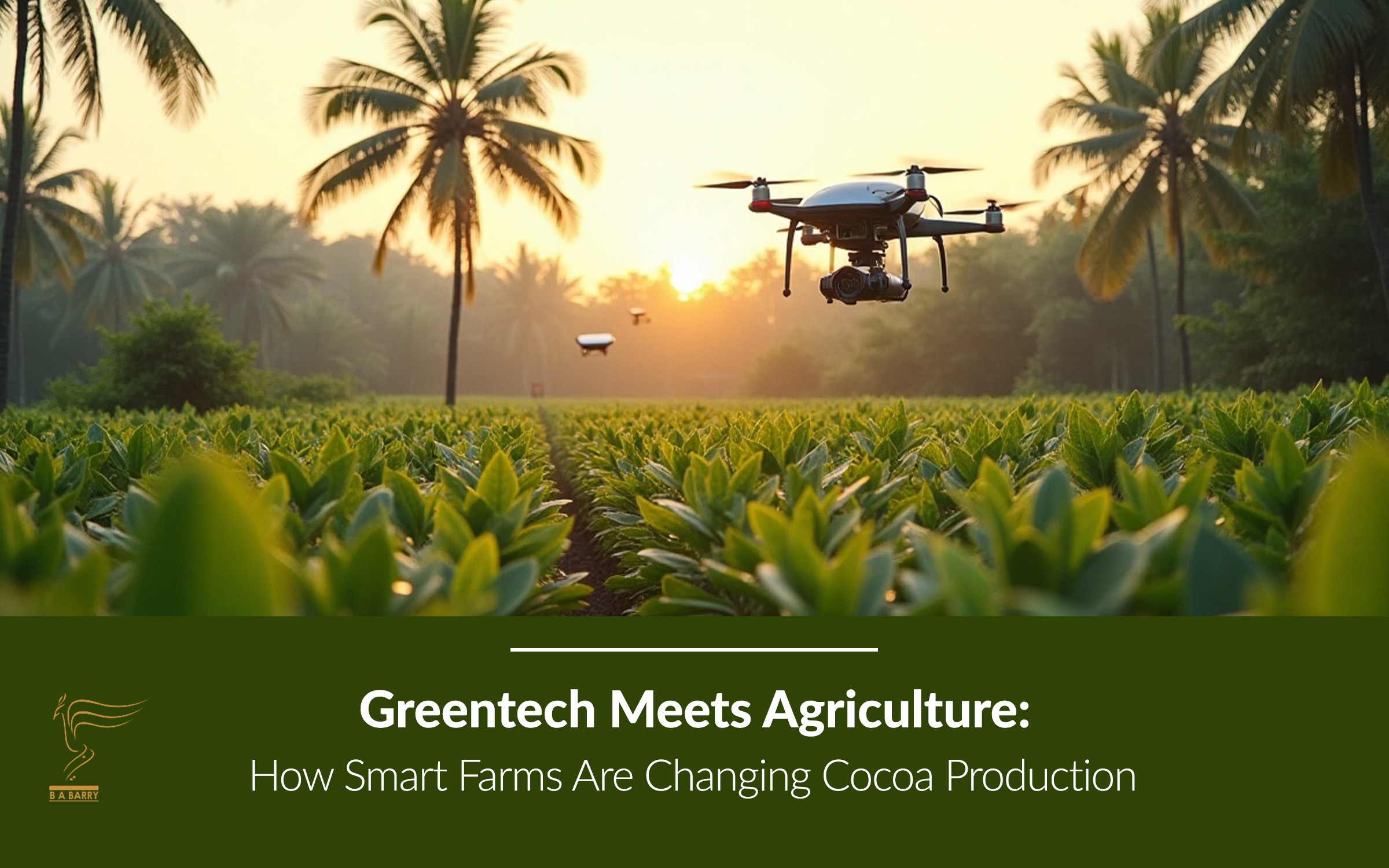- Tokyo : 12:02 |
- Singapore : 11:02 |
- Dubai : 07:02 |
- London : 03:02 |
- New York : 22:02 |
- Sydney : 14:02

Did you know that cocoa beans were already used more than 5,300 years ago by the native population? In fact, cocoa beans were used by pre-Columbian civilizations as currency for trade and ritualistic behaviors.
Since then, cocoa cultivation and production have come a long way. It has become the lifeline for millions of small farmers across the tropics. Not just that, it fuels the global chocolate industry. As cocoa cultivation and production progressed, the industry has also found itself amidst a couple of challenges.
We are going to explore these challenges today and understand the role of Greentech in changing cocoa production for the greater good.
You are likely to find climate change as a factor challenging and affecting various industries, and it is only the truth.
The natural habitat of cocoa trees is the lower storey of the evergreen rainforest. They enjoy relatively high temperatures, the maximum annual average ranging between 30 – 32ºC. As for rainfall, cocoa trees are sensitive to soil water deficiency, and thus, year-on-year variation in cocoa production is affected most by rainfall. Additionally, shading is indispensable in the early years.
Rising temperatures and unpredictable weather patterns are making it harder for farmers to maintain cocoa production. If the temperatures continue to rise, the farmers will face challenges on both fronts — quality and quantity.
Arthropods largely pollinate cocoa trees. Low availability or efficacy of the available pollinators is one of the significant reasons for the gaps in cocoa yields. Most of the time, there’s a lack of sufficient pollination.
Some of the other factors that affect cocoa production are water availability, soil nutrient levels, pests, and diseases.
Greentech, short for ‘Green Technology,’ refers to the use of technology to create products or services that are environmentally friendly. They improve operational performance while reducing costs, energy consumption, or negative impact on the environment. And its goals are rather simple:
Protect the environment
Repair the environmental damage done
Preserve Earth’s natural resources
Greentech in cocoa production specifically helps with the following during the farming process:
The use of AI models like XAI-CROP and Random Forest is being explored significantly. These models identify signs of common cocoa plant diseases, such as black pod rot, enabled via scanning. They analyze visual cues such as leaf color, pod surface, and tree health, detecting diseases before they spread furiously.
Once the disease has been identified, these models, along with other greentech, share suggestions on the best-suited pesticide. Constantly keeping track of the tree's health and detecting it early reduces the overuse of pesticides while also protecting non-target organisms. Additionally, they support the maintenance of soil health since too much pesticide can render the soil unsuitable for supporting a plant’s growth.
AI and drone technology have also allowed for target crop spraying rather than spraying pesticides over the entire farm. These aerial drones are guided by maps created by earlier scans, saving costs and reducing farmers' exposure to chemicals.
Although still under research and continuous testing, AI-powered computer vision systems like Unmanned Aerial Vehicle (UAV) can be used to count the pods of cocoa trees effortlessly, as opposed to manual counting.
It is achieved through many processes such as image segmentation, shape analysis, and overall analysis. This activity helps with better harvest and storage planning. Additionally, it helps with price forecasting.
Greentech involving the use of portable soil sensors is capable of analyzing the following aspects of the soil in real-time:
pH levels
Moisture
Nutrients
Since cocoa trees are significantly sensitive to a moisture level of the soil, the data from these sensors helps farmers adjust fertilization strategies and irrigation schedules. Greentech tools like the OFIS (Olam Farmer Information System) are already making this a reality, collecting detailed soil data across thousands of farms.
Machine learning algorithms analyze farm topography, rainfall data, and even sunlight exposure to suggest optimal planting zones. This ensures that cocoa trees are planted in areas where they can thrive the most.
Similarly, in the larger supply chain, tech enables the following two important things:
Traceability
Predicting deforestation
EU Deforestation Regulation (EUDR) and its likes are pushing cocoa buyers to prove where their cocoa is coming from. The aim is to prevent cocoa from being sourced from deforested areas. As a result, tools like Ghana Cocoa Traceability System (GCTS) and COCOBOD’s national traceability program collect geolocation data and use polygon mapping to verify the source of cocoa.
Additionally, satellite imagery from Sentinel-1 and Sentinel-2 is analyzed using machine learning to detect land use changes. This helps identify illegal encroachment into forests. AI tools can also forecast areas at risk of deforestation by analyzing tree loss patterns and farming pressure.
Even on the ground, flux towers measure carbon dioxide exchange, helping quantify cocoa’s role in carbon sequestration. Projects like Ghana’s Carbon Flux Tower Monitoring Project integrate this data into national greenhouse gas inventories. Consequently, nations and companies are able to report on their climate goals with hard data.
Smart farms, thanks to greentech integration, are making cocoa production more strategic and efficient. It’s helping producers effectively manage common concerns such as cocoa diseases and lack of moisture in soil, and it has proven that cocoa is not being sourced from deforested areas.
What once depended on intuition and manual labor is now becoming considerably easier with the help of AI, machine learning, and deep learning. It can help improve the yield and quality while helping producers meet sustainability requirements.